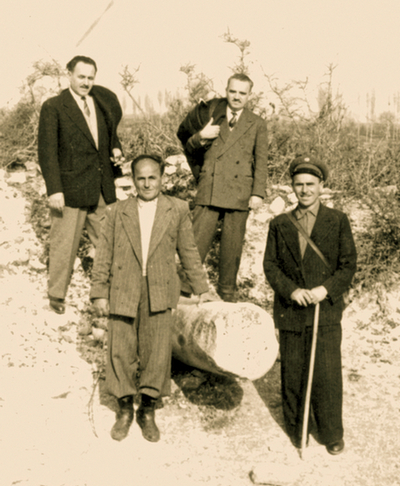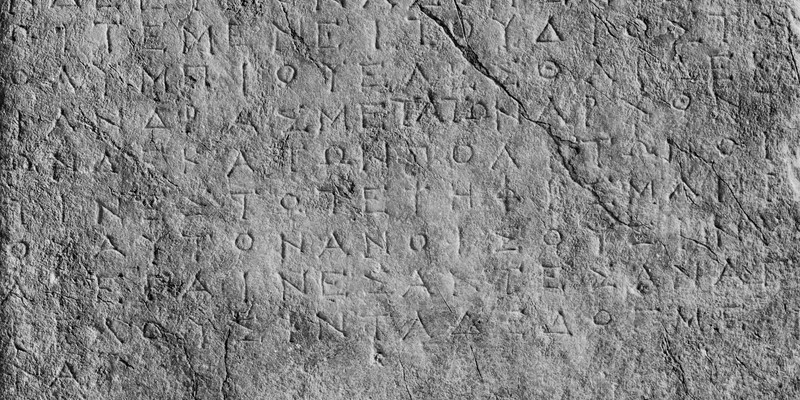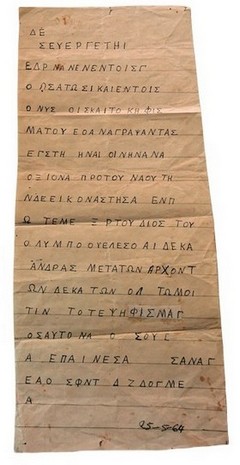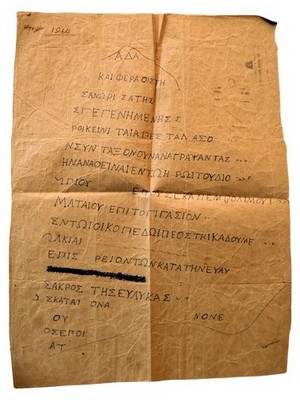In 1964, in the area south of the ancient city of Dion, where the places of worship and the sanctuaries of the residents of Dion were to be found a decade later, two important inscriptions were discovered. Two residents of Malathria, the previous name of the modern village of Dion, during the plowing of their fields collected these marble fragments, which mention the Sanctuary of Zeus Olympios. This sanctuary was the primary excavation aim of both the first excavator of Dion, G. Soteriades (1928-1931), and its successor, G. Bakalakis (1960s).
The two inscriptions were given to the first guard of antiquities, G. Zavadias (Fig. 1), whose “archaeological” instinct led him to keep a record what he saw engraved on the ancient marbles. On one case he used a simple writing paper and for the second wrapping paper. These apographs are preserved and consist part of the history of research of Dion.

The first inscription mentions the presidency and the dedication of a statue in the sanctuary of Zeus Olympios (Fig. 2a & Fig. 2b).
The other inscription is a royal letter of Philip V to the residents of Pherai and Dimitrias in the area of Magnesia (Fig. 3a & Fig. 3b). It is explicitly written that this letter should be “published” at the sanctuary of Zeus Olympios, since it was customed to publish important texts concerning the administration of the Macedonian kingdom at this sanctuary
These forementioned inscriptions were the first clue to where this sacred complex could be situated. Along with the collection of more inscribed fragments from this area, pieces of information, given by the villagers, regarding the existence of a big wall, which could not allow the plowing of their lands, led D. Pandermalis to make exploratory trenches on the southeast part of the Hellenistic Theater. During these excavations, a great altar and tethering stones with copper-alloy straps for the animals, which were to be sacrificed, were brought to light. Additionally, in the fill of pits votive offerings, architectural members from the structures of the sanctuary and inscribed fragments, which refer many political actions of Macedonian kings, were dug up, thus confirming the location of this important sanctuary of Macedonia.





